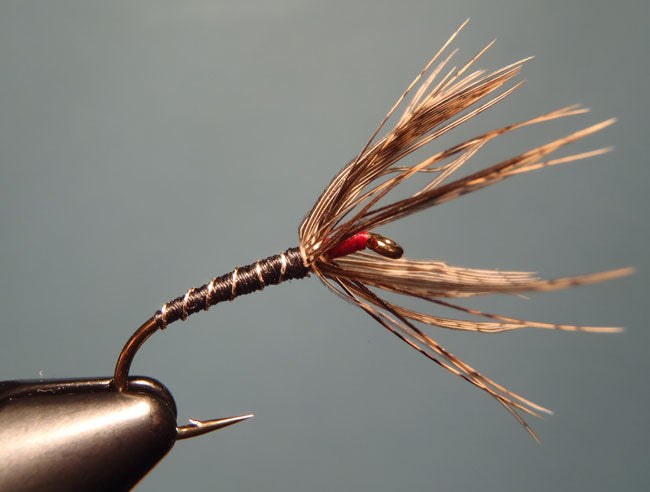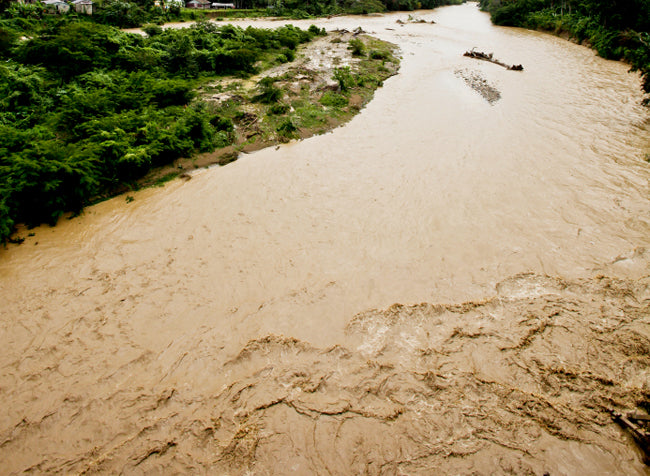Written by JasonIt happens to all of us at some point in our fly fishing career: You travel to a stream all full of hope and optimism along the way only to arrive and find that it resembles more of a snake made of frothy Nestles Quick rather than the clear, pristine water you daydreamed about. In a split second, all hopes seem dashed. On a local stream, it might not be so disheartening. It’s easy to turn around, go home, and do something more productive like grab a beer and tie a few flies. But if you’ve travelled hundreds (or thousands) of miles to a destination, it’s not so easy to forfeit. Temptation (and desperation) sets in. You’re there. You might as well give it a Hail Mary. Whether you’re forced into giving it a shot even when conditions are less than ideal, or you’re just up for a challenge, there are some things you can do to still catch fish even when the river is high and muddy.
- Target the slowest water. When the flow surges, trout will seek out the slowest water to take respite. It takes too much energy to hold in their usual lies and fight the current so they gradually seek out calmer water while the water rises until the flow slows down again. First, hit the usual suspects like eddies behind rocks, logs, or other obstructions. Fish will also hunker down at the bottom of the deepest pools but when the river is high, that might make the depth prohibitive to tenkara (or even conventional fly fishing). So here’s a little-known trick. Fish don’t always go deep. Many will move to the banks where the water is shallower and the current is slower because of the friction caused by the edge of the stream. This makes fish especially more accessible to the tenkara angler because they’re in shallower water. But I find targeting the banks to be the most successful option when the CFS is up whether I’m tenkara fishing or Western fly fishing.
- Fish a big, dark fly. Trout can’t see any better through chocolate milk than we can. So that means we have to make our flies as conspicuous as possible to be detected in murky water. Forget the dainty, subtle colored flies you fish with in normal conditions and go bold and big. Consider flies in dark brown or black (the best contrast) in sizes you wouldn’t normally fish (#8 or even #6). These will be much easier for the trout to see through the veil of churned up sediment.
- Beat the same spot to death. Under normal conditions, I usually hit a potential lie 3 or 4 times, then move on. My philosophy is that if the fish don’t take the fly after a few presentations, they won’t take it at all and it’s better to try a new spot with different fish. But when the water is up and opaque, you have to remember that one inch can be the difference between the trout seeing your fly or being completely blind to it. So that means making ten times the number of casts in the same spot as you normally might. Even the most accurate casts are still slaves to the current and what might seem like redundant casts can actually put the fly right in front of the fish’s eye, or 4 inches away (which might as well be invisible to them in murky water). So under these conditions, it’s worth it to cast to the same spot a lot more than you normally would.

Fishing in high or muddy water isn’t ideal, but sometimes you don’t have a choice (or maybe you’re brave enough to make the choice to do it). But it is possible to catch fish. After all, they still have to eat. If you’re willing to test your fly fishing skills, it’s just a matter of adjusting your presentation and trying some things outside the norm. Personally, I’d opt for the beer at my fly tying desk. But for those of you willing to brave rough water, hopefully some of these tips will help redeem a seemingly dismal situation.
What are your tips for fishing when the flows are high?
